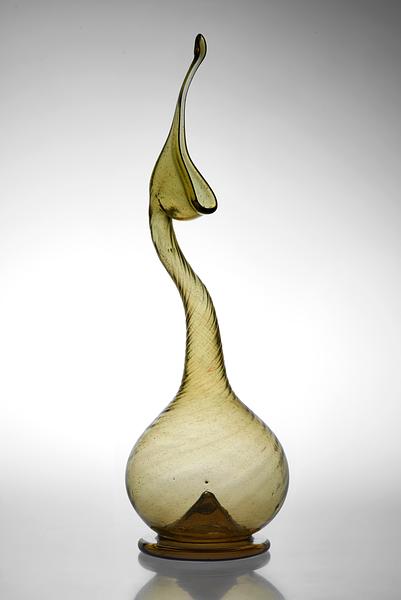Rosewater sprinkler, yellow-green glass, partly blown in a mold
Iran; 18th-19th century
H: 36 cm
After a period of several hundred years during which Iranian glass manufacture seems to have stopped, as glass was imported particularly from Venice, production was resumed in the 17th century. Although Iranian glass was influenced by Europe from this time on, a few special types were soon developed that were rooted in local customs. This type of vessel was used for sprinkling the hands and feet with fragrant rosewater. The bottle was made by blowing the molten glass into a fluted mold. The lower part was blown so that the grooves flattened out, while they were kept intact in the thinner neck, which was twisted and stretched into the distinctive organic shape.
Inv. no. 39/1967
Published in:
Kjeld von Folsach: Islamic art. The David Collection, Copenhagen 1990, cat.no. 259;
Kjeld von Folsach: Art from the World of Islam in The David Collection, Copenhagen 2001, cat.no. 359;
Sheila S. Blair and Jonathan M. Bloom (eds.): Cosmophilia. Islamic Art from the David Collection, Copenhagen, McMullen Museum of Art, Boston College, Boston 2006, cat.no. 79;
Annette Hagedorn: Islamic art, Köln 2009, pp. 94-95;
Joachim Meyer: Sensual Delights: Incense Burners and Rosewater Sprinklers from the World of Islam, The David Collection, Copenhagen 2015, cat.no. 24;
